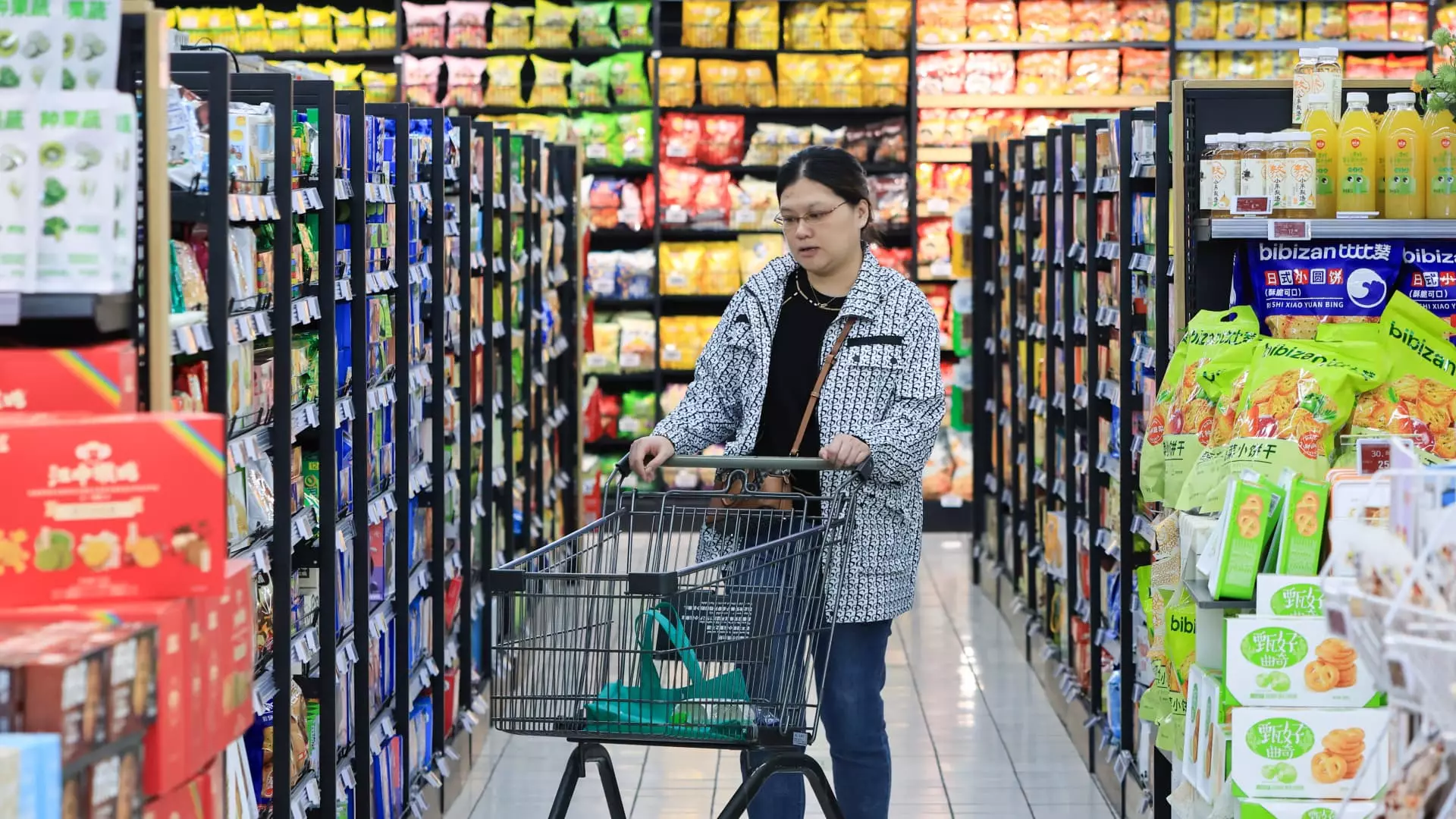China’s recent economic indicators reveal a profound and lingering struggle with inflation and overall economic performance. In November, the consumer inflation rate fell to a five-month low, hitting only 0.2% year-over-year as reported by the National Bureau of Statistics. This figure falls short of analysts’ expectations, suggesting a persistent weakness in consumer demand, despite China’s ongoing economic stimulus measures. In this article, we will delve into the implications of these inflation statistics, the persistent issues faced within the Chinese economy, and the potential pathways ahead.
The data released for November illustrates a stark contrast to market expectations. Analysts had predicted a slight rise in retail inflation to 0.5%, showing optimism for a rebound from October’s 0.3%. The core inflation figure, which omits volatile food and fuel prices, did see a modest increase to 0.3% from 0.2%. However, the overall consumer price index indicates that many consumers continue to experience a slowdown in purchasing power.
Particularly noteworthy is the disproportionate rise in prices of essential commodities such as pork and fresh vegetables, which surged by 13.7% and 10.0%, respectively. This anomaly suggests that while growth may be stagnant broadly, certain sectors reflect significant price increases potentially due to supply chain disruptions or seasonal factors in production.
Producer Prices and Wholesale Inflation Trends
The landscape for producer prices, as measured by the Producer Price Index (PPI), tells a different story. With a decline for the 26th consecutive month, the PPI fell by 2.5% year-over-year in November, slightly better than the projected 2.8% drop. This persistent deflationary trend highlights overcapacity in manufacturing and a mismatch between supply and demand. The significant drop in prices for ferrous materials by 7.1% and reductions in fuel and power prices indicate severe pressure on producers.
Comments from industry experts underline the persistence of this issue. Erica Tay of Maybank points out that accumulated inventories are increasing, intensifying the downward pressure on prices. This situation creates a circular paradox, where declining prices discourage further investment and production, perpetuating low demand and consumption.
Despite the government implementing numerous stimulus measures, including interest rate cuts and efforts to invigorate the stock market, the desired impact on consumption has been limited. The continued low levels of inflation signal that these strategies have not sufficiently addressed the inherent issues within the domestic economy. Becky Liu from Standard Chartered Bank emphasizes that given the context of ongoing trade tensions and political uncertainty, deflation could remain entrenched within China’s economy for the foreseeable future.
Analysts from Goldman Sachs echo this sentiment, projecting that the near-zero CPI figures may persist into 2024. This perspective aligns with the growing apprehension regarding economic policies and global trade dynamics that are currently in flux. The uncertainty ahead poses challenges not only for fiscal planners within China but also for external investors eyeing opportunities in the region.
While recent data depicts a grim outlook for retail price increases and wholesale deflation, there are flickers of optimism in selected sectors. October’s strong retail sales and a reported expansion in manufacturing activity may hint at potential for recovery, albeit feeble. Notably, the Central Economic Work Conference, scheduled to commence soon, is expected to outline pivotal economic goals and identify stimulus measures for 2025, aiming to further bolster economic resilience.
Major credit ratings firms like Fitch Ratings have revised down their GDP growth forecast for China, anticipating slower growth in 2025 and 2026 due to the potential for increased U.S. protectionism and lingering impacts of the property market downturn. With property investments crucial to China’s economic resilience, this sector’s challenges remain a central concern for policymakers moving forward.
While certain areas within China’s economy indicate signs of life, the overall narrative speaks to a complex web of challenges—deflationary pressures, stalled commodity price increases, and the need for more effective economic strategies. The coming months will be vital for determining how the interplay of government policies and market responses shape the future trajectory of China’s economic landscape.


Leave a Reply